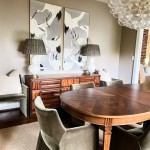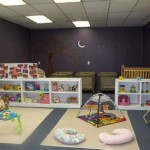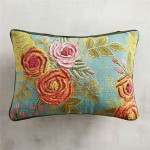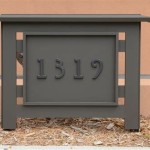One Bedroom Apartment Decorating Ideas On A Budget
Decorating a one-bedroom apartment presents a unique set of challenges, particularly when working within a limited budget. Space optimization and aesthetic appeal must be carefully balanced to create a comfortable and functional living environment. Successfully achieving this requires strategic planning, resourcefulness, and a keen eye for detail. The following guide provides a comprehensive overview of decorating ideas tailored for one-bedroom apartments, emphasizing cost-effective methods and practical solutions.
Prioritizing Functionality in Small Spaces
The core principle of decorating a small apartment on a budget revolves around maximizing functionality. Every item should serve a purpose, and clever storage solutions are essential. This stage involves meticulous assessment of existing space and identifying areas that can be optimized.
Multifunctional Furniture: Investing in furniture that serves dual purposes is a vital strategy. For example, a sofa bed can transform a living room into a guest bedroom. Ottomans with storage compartments provide seating while concealing clutter. Coffee tables with lift-top mechanisms offer a surface for dining and a hidden storage space. These pieces are generally economical compared to purchasing separate items for each function.
Vertical Storage Solutions: Implementing vertical storage solutions is another crucial aspect of effective space management. Wall-mounted shelves offer a practical way to display books, plants, and decorative items without occupying valuable floor space. Tall bookcases, strategically positioned, can create the illusion of higher ceilings while providing ample storage. Consider using floating shelves to create a minimalist and visually appealing storage system. Baskets and bins placed on shelves can help organize smaller items and keep the space tidy.
Wall-Mounted Accessories: Utilize wall space for items beyond shelves and artwork. Wall-mounted desks provide a workspace without taking up significant floor area. Wall-mounted lighting fixtures, such as sconces, free up table space and offer targeted illumination. Hooks can be installed to hang coats, bags, and accessories, keeping them organized and readily accessible.
Under-Bed Storage: Utilize the space beneath the bed for storing seasonal clothing, linens, or other items. Storage containers designed to fit under beds are readily available and provide a discreet storage solution. Alternatively, bed risers can be used to elevate the bed, creating additional storage space underneath. This area can be particularly useful for storing bulky items that are not frequently used.
Creating Visual Space and Ambiance
Effectively using color, light, and mirrors can significantly impact the perceived size and ambiance of a small apartment. These elements contribute to creating a more open and inviting atmosphere.
Strategic Color Palette: Opt for a light and neutral color palette for the walls. Light colors reflect light and make the space appear larger. Beige, cream, and light gray are excellent choices. Introduce pops of color through accessories such as throw pillows, curtains, and artwork. These elements can easily be changed to update the decor without requiring a complete overhaul. Using a limited color palette throughout the apartment creates a cohesive and harmonious look. Accent walls in a slightly darker shade can add visual interest and depth to the space.
Mirror Placement: Mirrors are invaluable tools for creating the illusion of space. Placing a large mirror on a wall can visually double the size of a room. Position mirrors strategically to reflect light and enhance the natural brightness of the space. Mirrors can also be used to create focal points or to reflect interesting architectural details. Consider using mirrored furniture, such as mirrored side tables or dressers, to further amplify the sense of space.
Optimizing Natural Light: Maximize natural light by keeping windows clean and unobstructed. Avoid heavy curtains that block sunlight. Opt for lightweight, sheer curtains or blinds that allow light to filter through. Position furniture strategically to avoid blocking windows. Natural light makes the space feel more open and airy. If natural light is limited, supplement it with artificial lighting.
Layered Lighting: Implement a layered lighting scheme that includes a combination of ambient, task, and accent lighting. Ambient lighting provides overall illumination, while task lighting focuses on specific areas, such as a desk or reading chair. Accent lighting highlights artwork or architectural features. Use a combination of floor lamps, table lamps, and overhead lighting to create a well-lit and inviting space. Dimmable light fixtures allow you to adjust the brightness and create different moods.
Decorating on a Budget: Resourceful Strategies
Decorating on a budget requires resourcefulness and creativity. Several strategies can be employed to achieve a stylish and comfortable living space without overspending.
Thrift Store and Flea Market Finds: Explore thrift stores, flea markets, and garage sales for unique and affordable furniture and decor items. Often, these items can be repurposed or upcycled to fit your style. A coat of paint or new hardware can transform an old piece of furniture. Be open to seeing potential in overlooked items. Thrift stores often offer a wide variety of items at significantly lower prices than retail stores.
DIY Projects: Embrace do-it-yourself (DIY) projects to create custom decor items. Simple projects such as painting canvases, creating wall art from fabric scraps, or building shelves from reclaimed wood can add a personal touch to the space without breaking the bank. There are numerous online resources and tutorials that provide step-by-step instructions for various DIY projects.
Repurposing Existing Items: Look for opportunities to repurpose existing items in new ways. An old ladder can be transformed into a bookshelf, or a vintage suitcase can be used as a side table. Repurposing items not only saves money but also adds character and individuality to the decor. Brainstorm creative ways to utilize items that you already own before purchasing new ones.
Sale and Discount Opportunities: Take advantage of sales, discounts, and clearance events to purchase furniture and decor items at reduced prices. Sign up for email newsletters from retailers to receive notifications about sales and promotions. Consider shopping at discount stores or online marketplaces for affordable options. Purchasing items out of season can often result in significant savings.
Free Resources: Utilize free resources such as online design tools, tutorials, and inspiration galleries. Many websites offer free room planning tools that allow you to visualize different layouts and decor options. Pinterest and other social media platforms provide a wealth of inspiration for decorating small spaces on a budget. Take advantage of these resources to gather ideas and develop a cohesive design plan.
Furniture Placement and Layout Optimization
Optimizing the layout and furniture placement is crucial for maximizing space and creating a functional living environment in a small apartment. Thoughtful arrangement of furniture can enhance the flow of the space and make it feel more open and inviting.
Creating Zones: Designate specific zones within the apartment for different activities, such as a living area, dining area, and workspace. Define these zones using area rugs, furniture placement, or subtle changes in decor. This helps to create a sense of order and functionality within the limited space. For example, an area rug can define the living area, while a small table and chairs can create a distinct dining space.
Furniture Arrangement: Arrange furniture to create a comfortable and functional flow. Avoid overcrowding the space with too much furniture. Leave ample space for walking around and moving freely. Consider the focal points of the room, such as a window or a fireplace, and arrange furniture accordingly. Place larger pieces of furniture against walls to maximize floor space. Create conversation areas by arranging seating in a way that encourages interaction.
Scale and Proportion: Choose furniture that is appropriately scaled for the size of the apartment. Avoid oversized pieces that will overwhelm the space. Opt for smaller, more streamlined furniture that fits comfortably within the available area. Consider the proportions of the room when selecting furniture. Tall, narrow pieces can help to create the illusion of height, while low, wide pieces can make the space feel more grounded.
Traffic Flow: Consider the natural traffic patterns within the apartment when arranging furniture. Ensure that there are clear pathways for moving from one area to another. Avoid placing furniture in ways that obstruct doorways or create bottlenecks. Keep pathways clear and uncluttered to promote a sense of openness and ease of movement.

How To Decorate A Studio Apartment On Budget Mckinley

How To Decor A Small Studio Apartment On Budget

9 Studio Apartment Decorating Ideas On A Budget Blisslights

30 Affordable Decoration Ideas For Small Apartment Interior Bedrooms

Пин на доске For The Home

17 Studio Apartment Design Ideas For Small Spaces Extra Space Storage

How To Decor A Small Studio Apartment On Budget

Pin En Home

Amazing Tricks To Decorating An Apartment On A Budget Jendela360

50 Apartment Decorating Ideas








